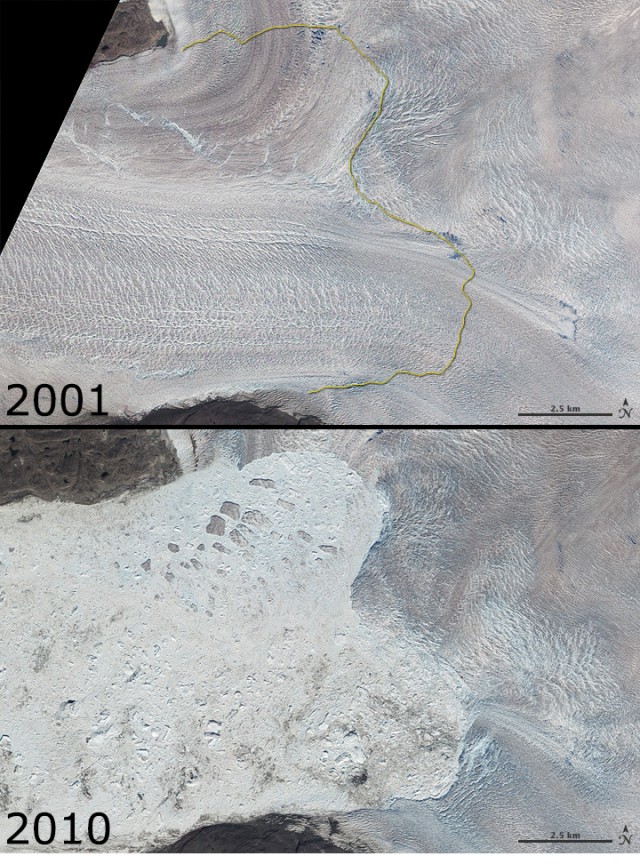Greenland glacier sets glacial speed record
Ars Technica » Scientific Method 2014-02-10

If the term “ice stream” sounds like an oxymoron to you, you haven't seen the Jakobshavn. (Pronounced “yah-cobes-hah-ven”.) This glacier on the western coast of Greenland is one of the few things in the crysophere that can’t really be said to move at a glacial pace. As ice flows from the center of Greenland to the edges, it gets funneled into low spots, forming outlet glaciers. In some places where that funneling is extreme and the ground surface is slick, the ice behaves like toothpaste being squeezed from a tube. These places are ice streams.
Almost seven percent of the Greenland ice sheet gets forced through the Jakobshavn Glacier. This tremendous flow of ice makes Jakobshavn stand out—it once filled a fjord with a floating shelf of ice that was more than 35 km long. Once, but no more. That shelf has disappeared over the past 150 years as the glacier has receded; since the mid-1990s, it has retreated more than 10 kilometers.
Because so much ice moves through the Jakobshavn, it has been intensely studied. Since 2009, the University of Washington’s Ian Joughin and several collaborators have been using the German Aerospace Center’s TerraSAR-X satellite to precisely track the glacier’s velocity. (Records using other methods go back further.) The satellite data reveals that the Jakobshavn got even faster over the past two years, setting a new glacial speed record at over 46 meters per day in the summer of 2012. That’s almost 2 meters per hour.
Read 5 remaining paragraphs | Comments




